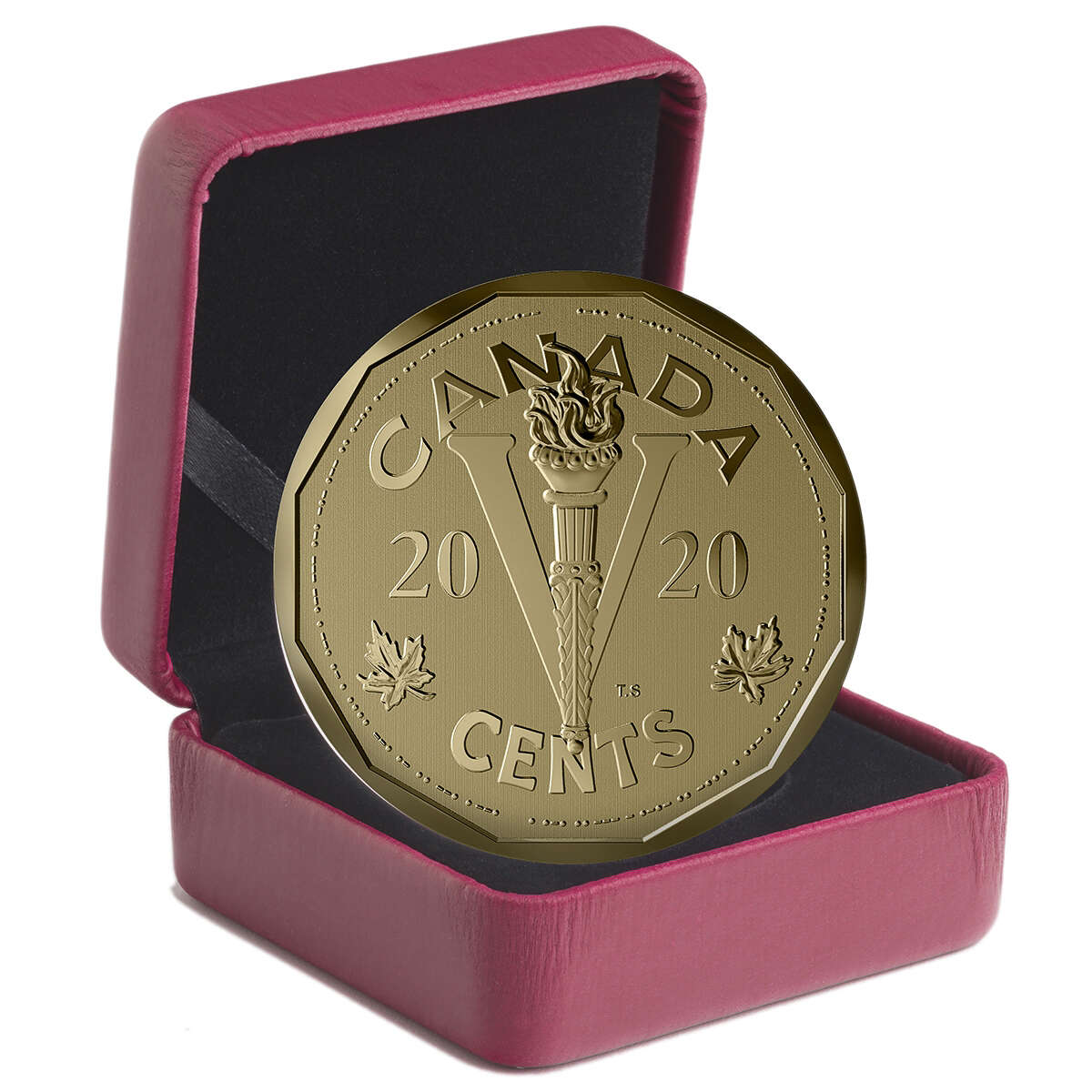Description
‘We Win When We Work Willingly’
Canada, 1943, Canadians began the year with tragic news from the Battle of the Atlantic and ended it with successes in Sicily. The end of the war was still two years away. But 1943 brought a hopeful shift that was fueled in part by Canada’s effort on the home front, where our sacrifices and resolve were represented by a coded message on a new 5-cent coin: We Win When We Work Willingly. Enhanced with special finishes, this large format 50 mm diameter bronze coin re-creates a historic design that is a favourite of collectors and historians. The reverse is a three-part tribute: to Canada’s nickel-less 1943 Victory nickel; to its creator, Thomas Shingles; and to the Canadians on the home front, where civilian contributions were crucial to the war effort and, ultimately, the Allied victory. Mintage is limited to just 8,000.
Canada, 1943, Canadians began the year with tragic news from the Battle of the Atlantic and ended it with successes in Sicily. The end of the war was still two years away. But 1943 brought a hopeful shift that was fueled in part by Canada’s effort on the home front, where our sacrifices and resolve were represented by a coded message on a new 5-cent coin: We Win When We Work Willingly. Enhanced with special finishes, this large format 50 mm diameter bronze coin re-creates a historic design that is a favourite of collectors and historians. The reverse is a three-part tribute: to Canada’s nickel-less 1943 Victory nickel; to its creator, Thomas Shingles; and to the Canadians on the home front, where civilian contributions were crucial to the war effort and, ultimately, the Allied victory. Mintage is limited to just 8,000.
The Design:
The reverse re-creates the celebrated Victory design by Thomas Shingles that appeared on Canada’s five-cent coins between 1943 and 1945. A flaming torch represents the sacrifices made by Canadians at home and on the battlefields during the Second World War. Behind it, a big “V” has dual meaning: it alludes to Sir Winston Churchill’s famous “V for Victory” sign, and is also the Roman numeral that represents the denomination (5). On either side of the V are maple leaves, while traditional denticles are replaced by the message, “WE WIN WHEN WE WORK WILLINGLY” in Morse code. The obverse features the historical effigy of King George VI by T. H. Paget.





